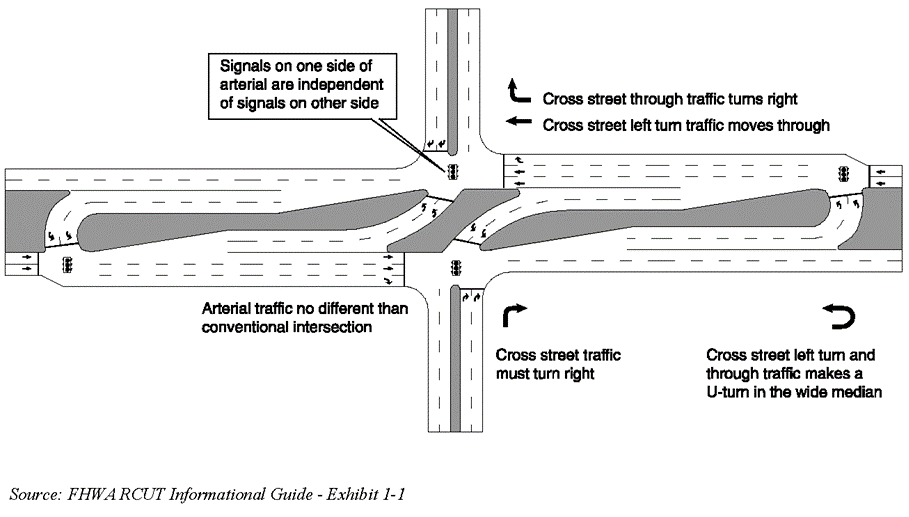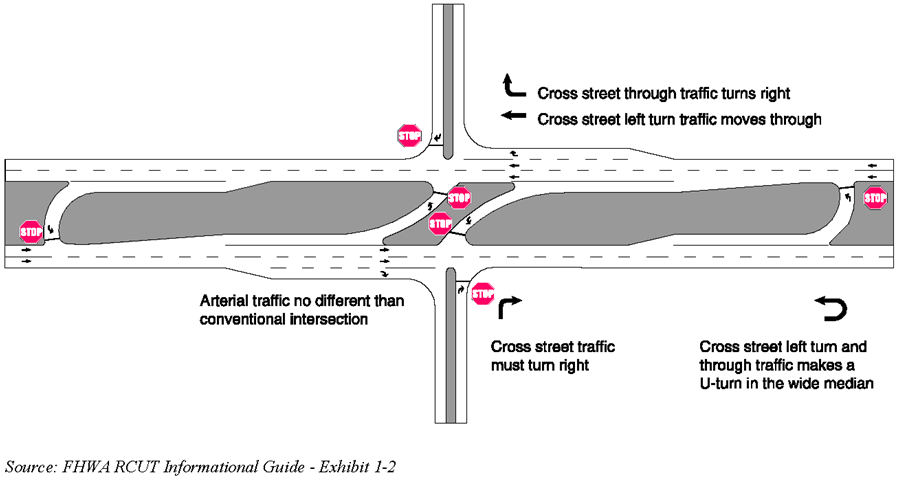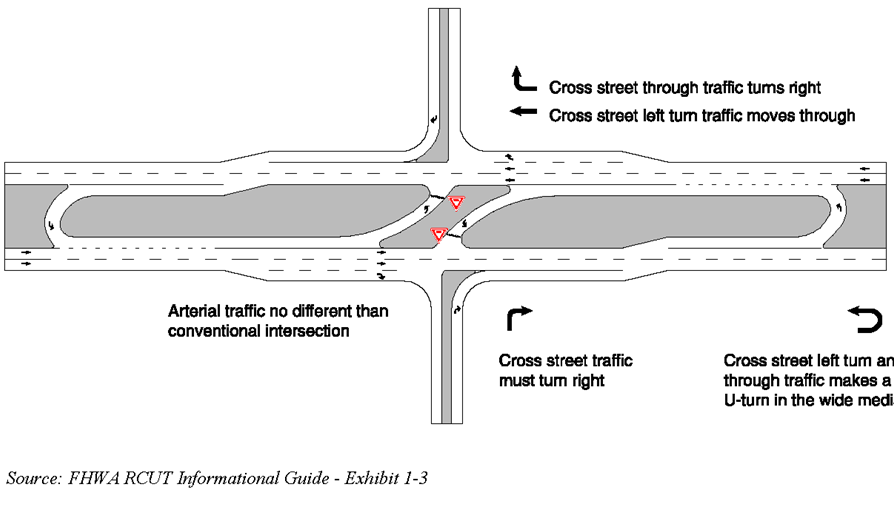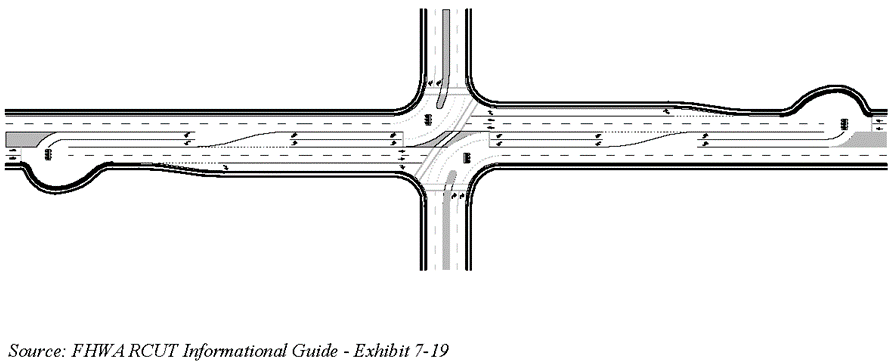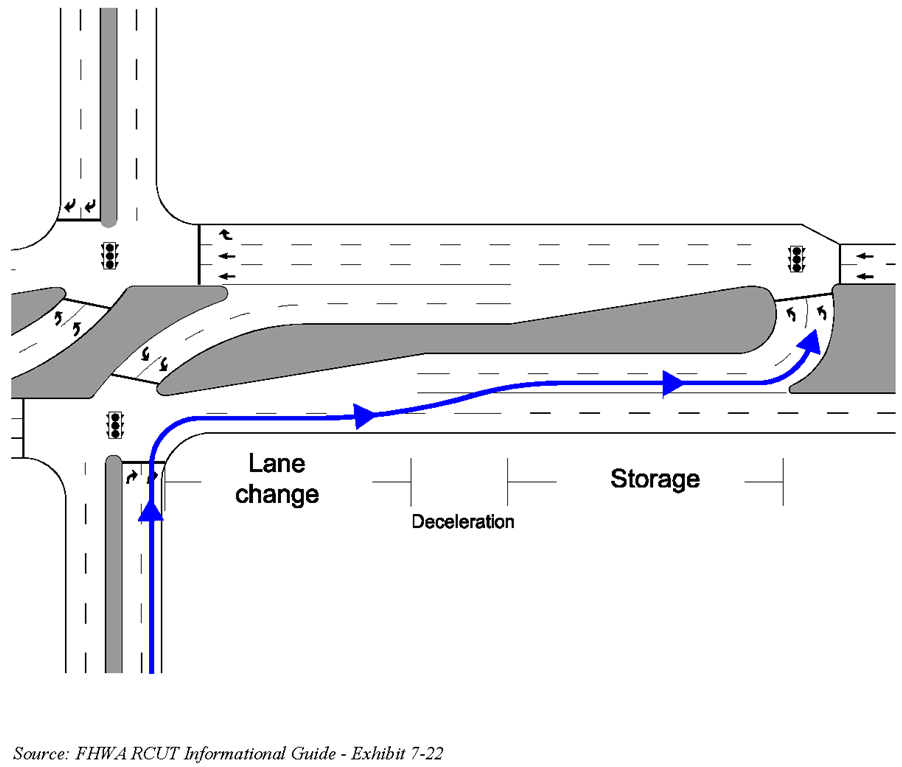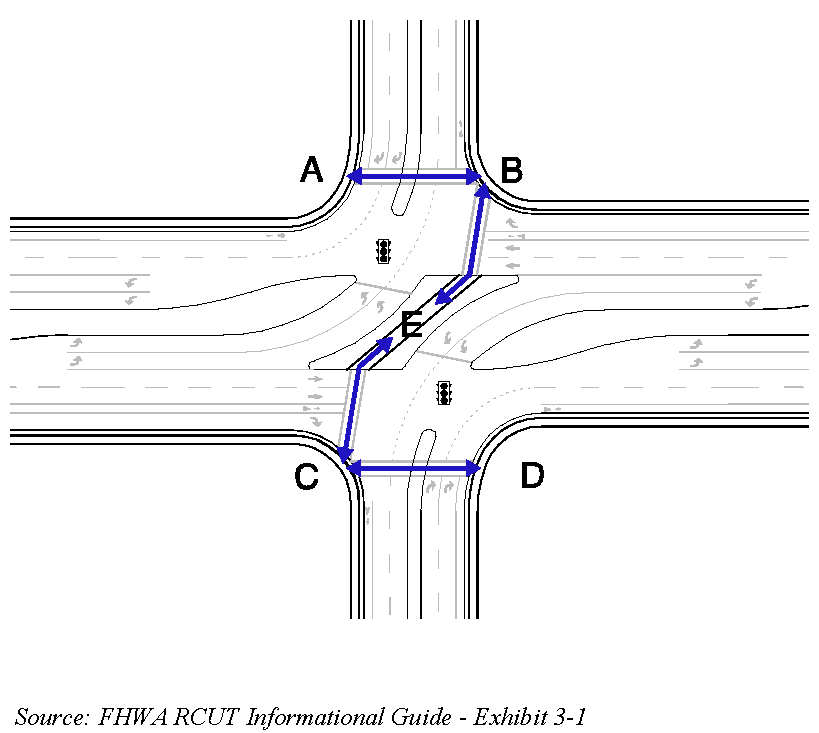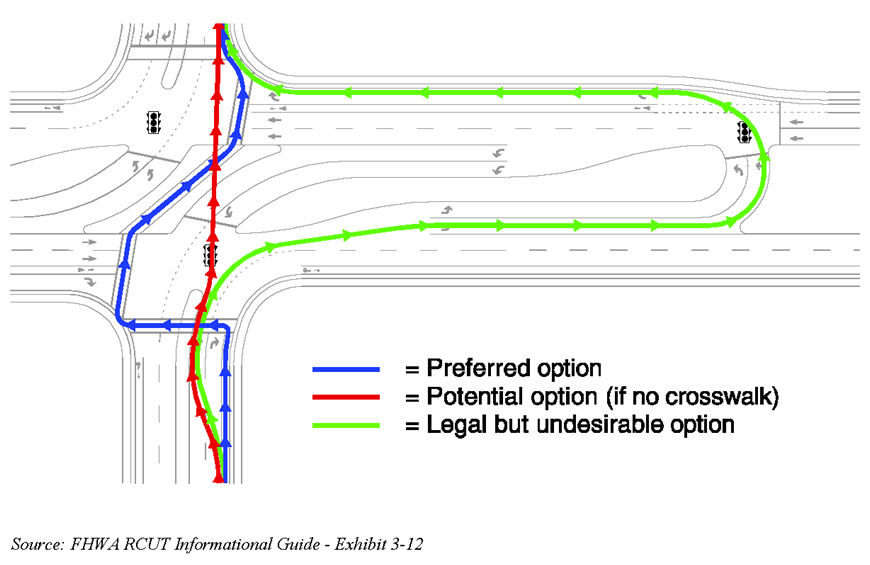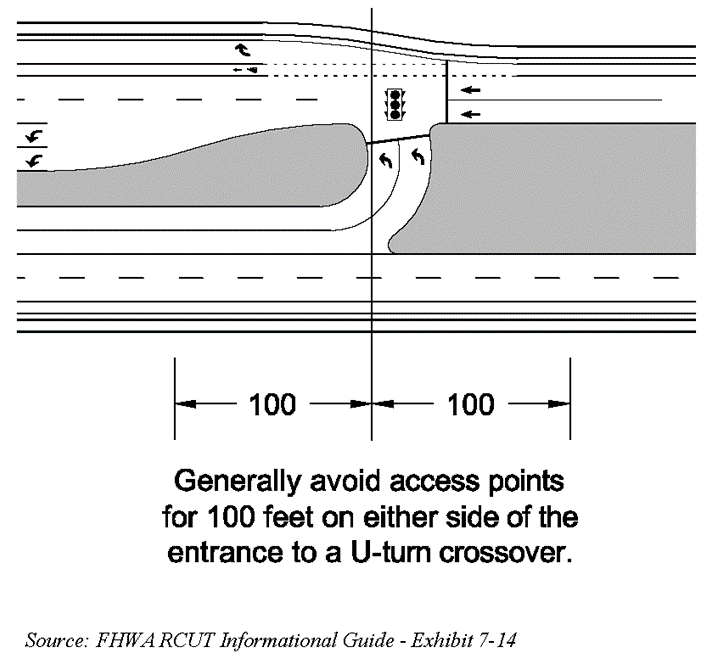Section 5: Restricted Crossing U-Turn Intersection (RCUT)
Anchor: #i1005973Overview
The RCUT, also known as a superstreet intersection, is an at-grade intersection with directional medians such that the minor road traffic must turn right and make a U-turn back to cross or make a left-turn maneuver. The benefits of the RCUT include a significant reduction in intersection conflict points, and a reduction in crash rates and crash severity. TxDOT has adopted the FHWA Restricted Crossing U-Turn Informational Guide as the primary source for RCUT Guidelines. The information contained in this Appendix is considered a companion guide and is intended to document TxDOT’s suggested approach to RCUT design.
See Figures E-35 through E-37 for examples of RCUTs with signals, without signals, and with merges. For RCUT 3 leg approaches, reference Chapter 7 of the FHWA Restricted Crossing U-Turn Informational Guide.
Figure E-35. Example of RCUT Intersection with Signals
Figure E-36. Example of RCUT Intersection with Stop-Control
Figure E-37. Example of RCUT Intersection with Merges
Anchor: #i1006016Design Considerations
The spacing of the RCUT crossovers from the intersection is central to the proper functioning of the intersection. The typical location for the median opening at an RCUT intersection with stop sign or signal control is 400 to 800-ft. downstream of the minor road.
The median width is a function of the design vehicle (typically a WB-67 in Texas) and the preferred alignment of the design vehicle as it turns into the opposing traffic; see Chapter 7 discussion on Median U-Turn Movements. For instances where the U-turn can’t be completed using the existing pavement, a loon type configuration with back-to-back storage bays may be used to provide additional space (see Figure E-38). See Figure E-39 for spacing considerations for a minor street through or left movement. Designers must also ensure good intersection sight distances at RCUT crossovers by making sure slopes and plantings in the median are cut back beyond the lines of sight.
Figure E-38. RCUT Intersection with Back-to-Back Two-Lane Crossover Storage Bays
Figure E-39. Spacing Consideration for a Minor Street Through or Left Movement
Anchor: #i1006049Intersection Angle
The angle of the side roads to the main lanes of an RCUT intersection can have an impact on traffic operations and the conversion from a conventional intersection to an RCUT intersection. RCUT intersections at an acute angle (less than 90 degrees) generate left turn movements more effectively with the major street as opposed to an obtuse angle (greater than 90 degrees). Figure E-40 demonstrates this concept.
Figure E-40. RCUT Intersection Angle Considerations
Anchor: #i1006068Pedestrian and Bicyclist Considerations
RCUTs have benefits for pedestrians, which include a reduction in the number of conflict points and a reduction in cycle lengths (when signalized). In general, an RCUT is better suited for relatively low pedestrian activity or, at least, relatively low volumes of pedestrians crossing the major street. The primary pedestrian crossing pattern is shown in Figure E-41. The FHWA Restricted Crossing U-Turn Informational Guide provides guidance for additional pedestrian crossing alternatives.
Figure E-41. Pedestrian Movements in a RCUT Intersection
Bicyclists on the major roadway travel through the RCUT the same way they travel through a conventional intersection. The options available for bicyclists approaching on the minor street are:
- Anchor: #BRIVTUYE
- Bicyclists follow pedestrian crossing rules (preferred option): Bicyclists approach the intersection and exit the street to the right and follow the pedestrian (“walk” /” don’t walk”) indications. Anchor: #FXNOBEYD
- If no crosswalk is available, a potential option is for the bicyclist to pass through/across the channelizing island. Anchor: #VIAWVKSG
- Bicyclists following vehicle rules: Bicyclists approach the intersection on the right and follow the vehicle signal indications. This option is legally permissible, but undesirable.
Ultimately, a thorough site assessment, an assessment of anticipated bicycle and pedestrian volumes, and an assessment of projected origins and destinations for pedestrians and bicyclists should be conducted to determine the preferred method of movement through the RCUT.
Figure E-42 depicts the three options:
Figure E-42. Minor Street Through Options for Bicycles
Anchor: #i1006126Access Management
From an access management standpoint, some of the possible advantages of an RCUT include the following:
- Anchor: #XEXECRDH
- Provides multiple side street locations along the RCUT corridor. Anchor: #HSXDTDON
- Allows flexibility for crossover locations to accommodate adjacent driveways and side streets. Anchor: #KIPDOEPT
- Provides significant progression benefits along the corridor, which can allow for speed control using the signals.
Some of the possible disadvantages include not allowing driveways or side streets near entrances to U-turn crossovers and not having driveways with direct left turns. In general, avoid access points for 100-ft. on either side of the entrance to a U-turn crossover (see Figure E-43). Reference the FHWA Alternative Intersections/Interchanges Informational Report (AIIR) for additional guidance with respect to access management.
Figure E-43. Area Near U-turn Crossover Where Access Point Should Be Avoided
